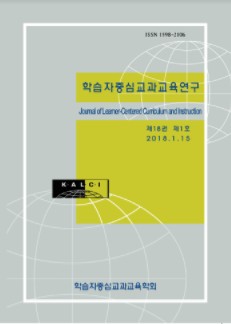- 영문명
- A Theoretical Investigation of the Causal Relationship between Rewards and Intrinsic Motivation
- 발행기관
- 학습자중심교과교육학회
- 저자명
- 이상하(Lee, Sang Ha)
- 간행물 정보
- 『학습자중심교과교육연구』제10권, 189~206쪽, 전체 18쪽
- 주제분류
- 사회과학 > 교육학
- 파일형태
- 발행일자
- 2005.12.30

국문 초록
이 연구는 보상이 내적 동기에 미치는 영향에 관한 연구들을 통합 정리하기 위해서 Deci, Coestner, Ryan(1999)과 Cameron, Pierce(1994)가 수행했던 두 개의 메타분석을 비교하는 것이 목적이다. 두 메타분석에서 보상의 종류에 따라서 내적동기에 미치는 영향이 달라지는 결과를 얻었고, 이 결과의 해석을 이론적으로 뒷받침하기 위하여 인지평가이론
(Cognitive Evaluation Theory(CET))과 일반흥미이론(General Interest Theory (GIT))이
구안되었다. 특히, CET와 GIT는 수행결과에 주어지는 보상이 내적동기에 미치는 영향에 관하여 두 메타분석의 상반되는 결론을 정당화시켰기 때문에, 두 메타분석과 각각 관련되어 있는 CET와 GIT의 차이점도 역시 논의되었다. GIT가 CET보다 보상과 내적동기를 매개하는 요인들을 보다 많이 포함하고 있다. 그러므로, 이론적으로 GIT가 보상이 내적동기에 미치는 영향을 보다 유연하게 설명할 수 있다는 점에서 CET보다 우월하다고 볼 수 있다. 이 연구는 GIT에 우호적인 이론적 논의를 하였다.
영문 초록
This paper is devoted to comparing two meta-analyses that Deci, Coestner, and Ryan (1999) and Cameron and Pierce (1994) conducted to integrate effects of rewards on intrinsic motivation. The Cognitive Evaluation Theory (CET) and General Interest Theory (GIT) were proposed to explain results of the meta-analyses each. In particular, CET and GIT were crashed to justify different conclusions of the meta-analyses about effects of performance-contingent rewards on intrinsic motivation. Since the CET and GIT were closely related to each meta-analysis, differences of both CET and GIT are also described. The GIT is more flexible and more defensible than the GET in that GIT includes more factors as mediators than does CET. Theoretical discussions are provided in favor of the GIT
목차
키워드
해당간행물 수록 논문
참고문헌
최근 이용한 논문
교보eBook 첫 방문을 환영 합니다!

신규가입 혜택 지급이 완료 되었습니다.
바로 사용 가능한 교보e캐시 1,000원 (유효기간 7일)
지금 바로 교보eBook의 다양한 콘텐츠를 이용해 보세요!



